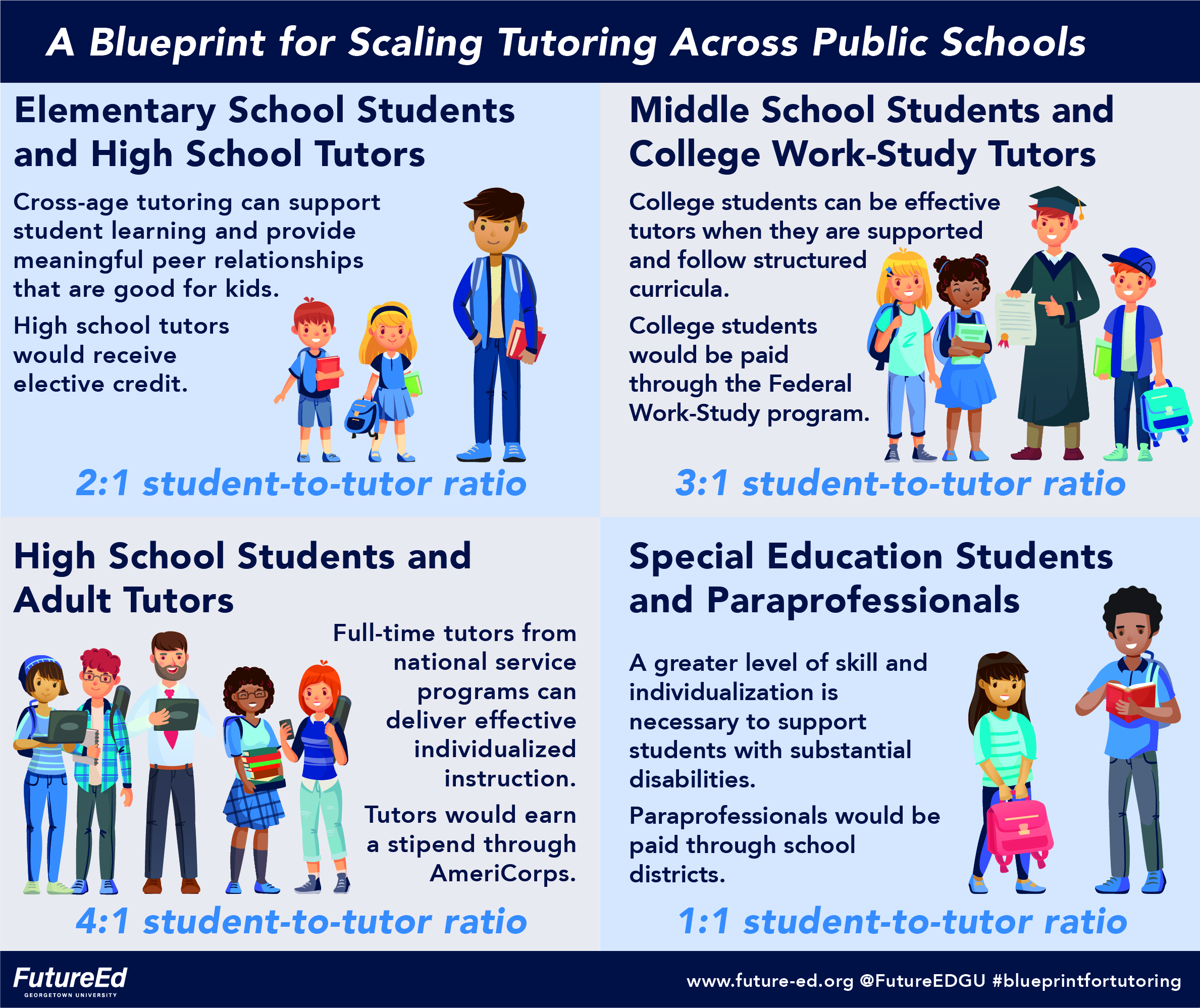An extensive and more “permanent” tutoring system is emerging as a leading and equity-based solution for U.S. schools attempting to help students recover from COVID learning loss.
Equal-access tutoring—which “is among the most effective education interventions ever studied”—can be scaled nationally, say associate professor Matthew A. Kraft and research program associate Grace T. Falken, both from Brown University, in a new working paper.
The practice is more effective than nearly all other interventions in improving academic achievement but is only broadly available to students whose families can afford private tutoring, which now constitutes a $47 billion industry in the U.S., they say in a post for FutureEd, a Georgetown University think tank.
Extending the school dy by 100 hours—or 30 minutes a day—would be the first step in establishing a permanent tutoring system. This would allow math and English tutors the time to work with groups of two to four students, they say.
More from DA: 10 ways leaders can solve education’s COVID recovery
This system could also be driven by peer tutors. For example, high school students would tutor elementary school students as an elective course, college students could tutor middle school students as a federal work-study job, and recent college graduates could work with high school students as full-time tutors.

“There are many reasons to be optimistic that tutoring would have benefits beyond supporting students’ academic development,” Kraft and Falken write. “Positive, caring relationships with tutors might support students’ social-emotional development, enhance their attachment to and attendance at school, and expose students to older peers who can serve as mentors.”
Launching a tutoring system would require a “substantial investment” from the federal government. Providing tutoring for students in the nation’s 20,000 lowest-performing schools could cost the federal government about $10 billion a year, they say.
Expanding tutoring to all Title I schools would cost approximately $16 billion, which is nearly twice the current federal spending for Title I schools, they say.
More from DA: 7 things students say about resilience during COVID
Tutoring systems are already being fortified across the country. Maryland has allocated $100 million toward tutoring while Los Angeles USD is paying teachers to tutor individual students outside of school.
Another tutoring model exists in the Minnesota Reading Corps, an initiative now expanding to 12 other states.
The program trains AmeriCorps volunteers in reading science so they can tutor students from age 3 through grade 3 in one-on-one or small group settings.







